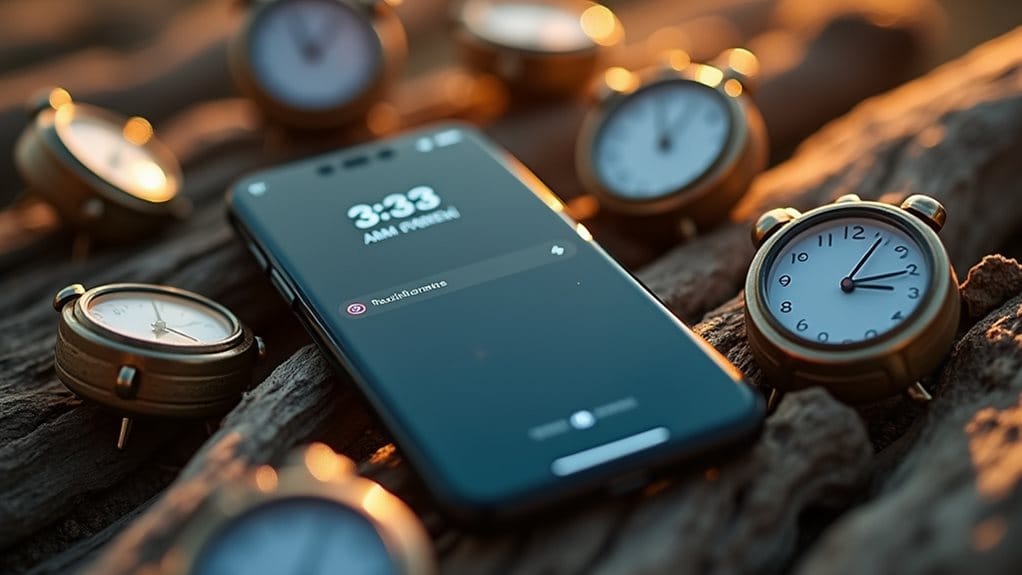“The user you’re trying to reach” refers to your target audience in today’s hyper-connected online environment, where people spend over six hours online daily but have attention spans of just 8.25 seconds. You’re targeting individuals who scroll past content in 1.7 seconds, use multiple devices simultaneously, and feel digitally fatigued from constant engagement. Traditional demographics won’t suffice—you need advanced segmentation techniques to understand their deeper motivations, privacy concerns, and communication preferences across eight different channels to effectively capture their fleeting attention and drive meaningful engagement.
Quick Guide
- Understanding your target user means going beyond basic demographics to uncover deeper motivations and behavioral patterns that drive their decisions.
- Modern users have drastically shortened attention spans of 8.25 seconds, spending only 1.7 seconds examining content before moving on.
- The user you’re reaching is likely experiencing digital fatigue, with 73% of Gen Z feeling overwhelmed by constant online engagement.
- Your target audience uses multiple devices daily, spends over 6 hours online, and increasingly values privacy through VPN usage.
- Effective user reach requires utilizing multiple communication channels, as LinkedIn achieves 39% response rates compared to email’s 1-8%.
Profiling Your Audience Beyond Basic Demographics

While traditional demographic markers like age and gender provide a foundation for audience understanding, today’s sophisticated marketers employ advanced segmentation techniques that reveal the deeper motivations driving consumer behavior.
You’ll harness machine learning algorithms like Louvain Community and Label Propagation to uncover subtle sub-groups with shared preferences, moving beyond surface-level characteristics to create precise, data-driven audience clusters. Modern audience profiling increasingly relies on ethical guidelines to ensure responsible data collection and analysis practices that respect user privacy while delivering actionable insights.
Understanding User Behavior and Digital Habits
You’re facing users who spend over 6 hours online daily yet struggle with shortened attention spans across multiple devices.
Your audience switches between smartphones, laptops, and tablets throughout their day, with 119% mobile penetration indicating they’re managing several connected devices simultaneously. This constant connectivity creates digital fatigue that directly impacts how they process and respond to your content, making timing and format critical to your success. With 93.1% internet penetration, nearly all of your potential audience is online, but they’re competing for attention in an increasingly crowded digital landscape. To enhance privacy and security during their online activities, many users turn to VPNs for enhanced privacy, ensuring their data remains protected while browsing.
Digital Fatigue Impact
As screen time reaches unparalleled levels across all demographics, digital fatigue has emerged as a defining challenge of modern technology use.
You’re experiencing mental exhaustion that manifests as decreased motivation and increased anxiety.
Nearly half of all users report feeling overwhelmed by digital engagement, with Gen Z showing the highest rates at 73% despite their digital-native status.
Device Usage Patterns
The patterns emerging from your daily device interactions reveal a significant shift in how humanity connects with the digital world.
You’re witnessing desktop usage decline from 72.3% to 61.5% since 2020, while smartphones dominate with 91% ownership rates.
Your mobile device now handles 75.9% video consumption and primary internet access, fundamentally changing how you engage with digital content daily.
Attention Span Challenges
Since constant notifications and digital distractions fragment your focus throughout the day, your attention span has shrunk to just 8.25 seconds in 2025—a dramatic drop from 12 seconds in 2000.
You’re now spending only 1.7 seconds examining content before scrolling away.
This decline forces you to process information faster while making it harder to engage deeply with meaningful content.
Identifying Your True Competition in the Digital Ecosystem
When you’re operating in today’s online environment, your real competitors aren’t just the companies selling similar products—they’re the entire network of firms vying for your customers’ attention, data, and ecosystem participation.
You’ll need to map referral traffic patterns, analyze data flows, and identify which platforms control critical access points to understand where competitive pressures actually exist.
Crafting Messages That Resonate and Avoid Spam Filters

Why do some emails effortlessly capture attention while others disappear into digital oblivion?
You’ll succeed by maintaining consistent brand voice while using conversational tone.
Keep subject lines between 30-50 characters and avoid spam triggers.
Balance text with images, limit to three visuals per email, and include clear CTAs.
Test authentication settings and use spam filter tools before sending.
Strategic Outreach Methods for Maximum Engagement
Eight different communication channels represent the sweet spot for successful businesses maximizing their outreach potential.
You’ll want to combine phone calls, email, live chat, and social media since prospects engage differently across platforms.
LinkedIn delivers 39% response rates versus email’s 1-8%.
Use lead scoring to prioritize high-value contacts, then adapt your channel selection based on prospect behavior and response history.
Timing and Platform Selection for Optimal Reach

While choosing the right communication channels forms the foundation of your outreach strategy, timing your message delivery and selecting ideal platforms can dramatically enhance your results.
You’ll maximize engagement by posting Monday through Thursday between 10 a.m. and 1 p.m.
Early morning works best for Facebook, while TikTok thrives from noon to evening.
Strategic timing triggers algorithmic enhancements.
Overcoming Modern Challenges in User Attention and Accessibility
Perfect timing means nothing if users can’t access your content once they arrive.
With homepages averaging 1,257 elements in 2025, complexity creates barriers for disabled users.
You can’t rely on quick-fix accessibility overlays. Instead, embed accessibility into your design and development processes from the start.
Train your teams, conduct thorough audits, and include disabled users in testing.
Wrapping Up
You’ve learned to reach your audience by understanding their digital behavior, identifying real competition, and crafting messages that bypass spam filters. You’ve uncovered strategic outreach methods, ideal timing, and platform selection techniques. Now you can overcome modern attention challenges and accessibility barriers. Apply these understandings to change your outreach from guesswork into targeted engagement. Your success depends on implementing these strategies consistently while adapting to your audience’s changing preferences and digital habits.
